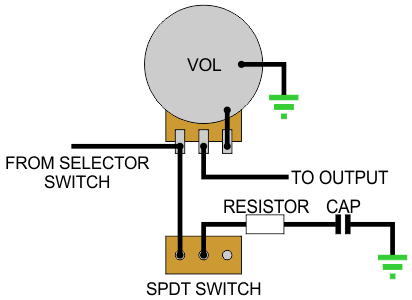C
Cederick
Guest
I'm thinking about having a miniswitch for tone-control instead of a pot, both because of the looks and because I rarely fine-tune the tone knob very much anyway.
So I wonder if this could work?
Otherwise, a miniswitch for toggling direct into output or through a tone knob is also an alternative that could work for me. I would have all adjustment possibilities, but I could still leave the tone knob in a good position and then use the switch to bypass it because with a non-step knob its almost impossible to find the exact spot again.

So I wonder if this could work?
Otherwise, a miniswitch for toggling direct into output or through a tone knob is also an alternative that could work for me. I would have all adjustment possibilities, but I could still leave the tone knob in a good position and then use the switch to bypass it because with a non-step knob its almost impossible to find the exact spot again.





